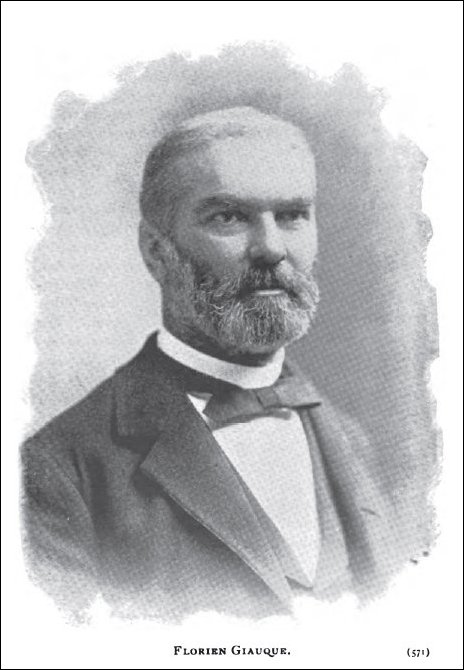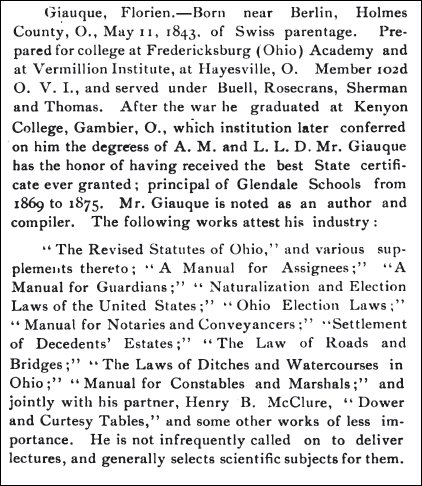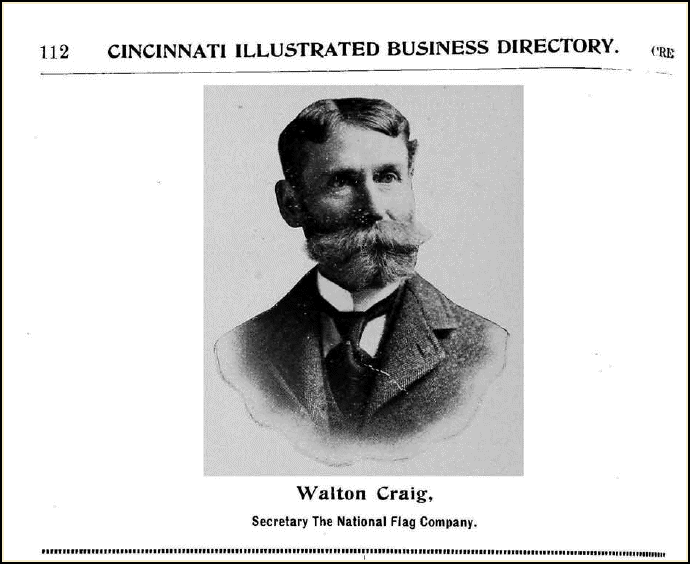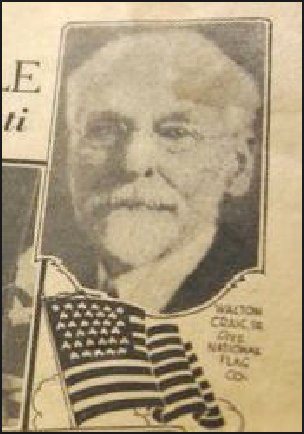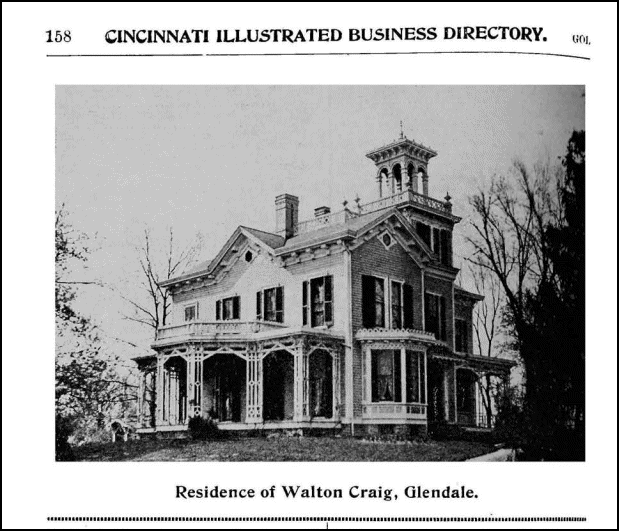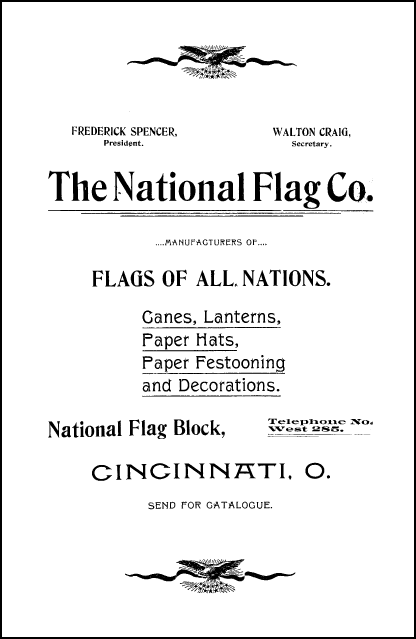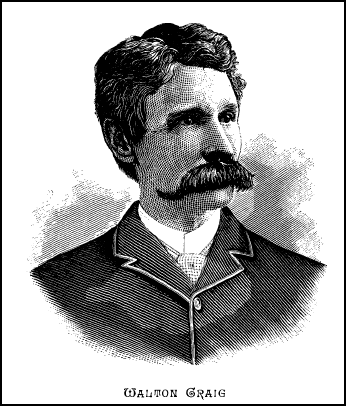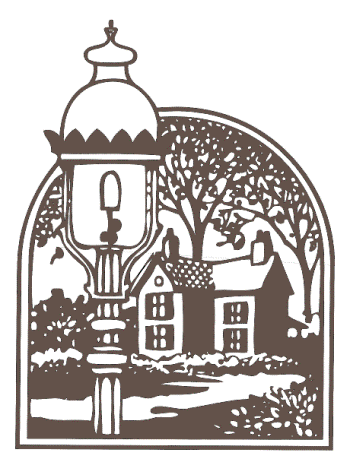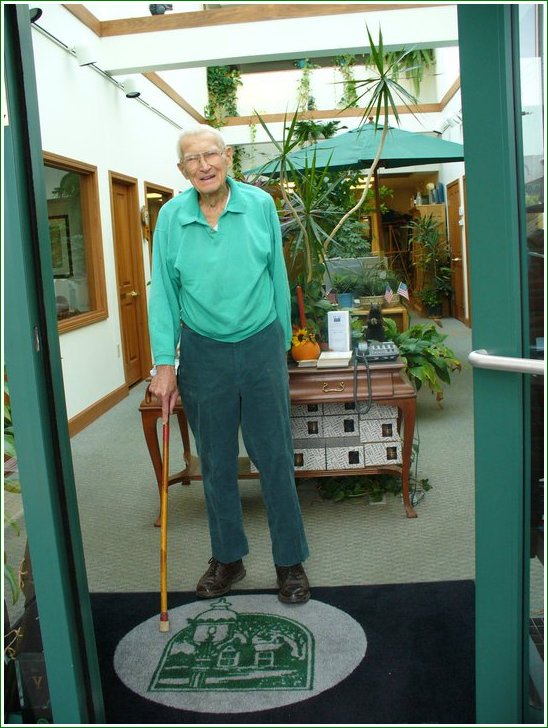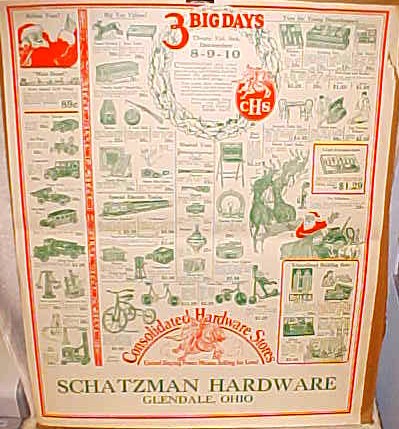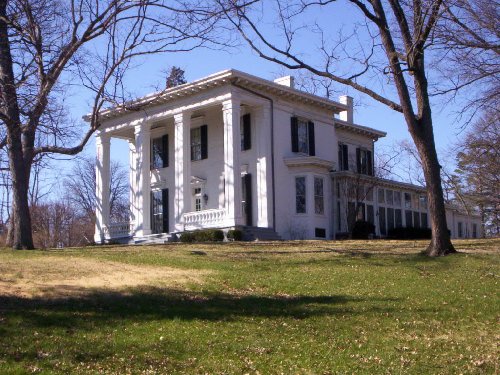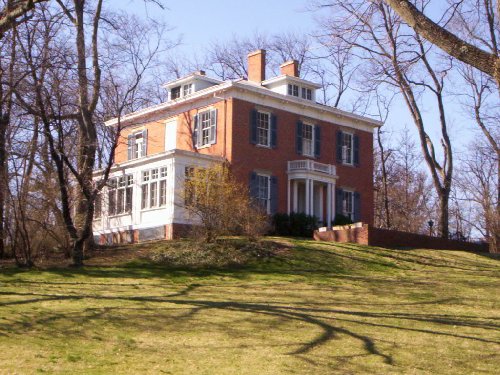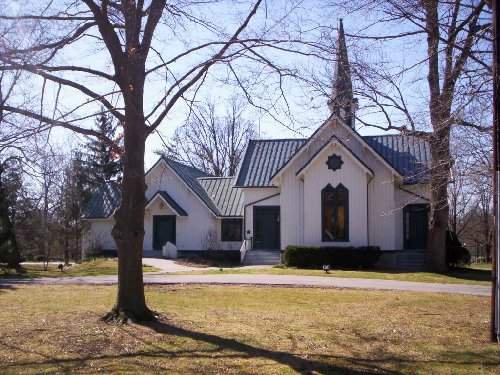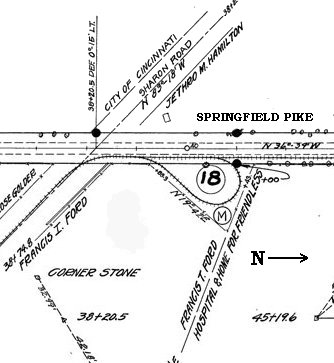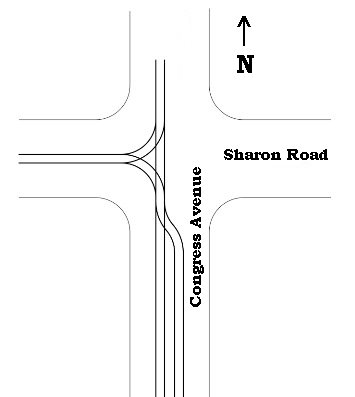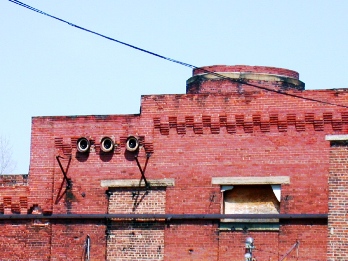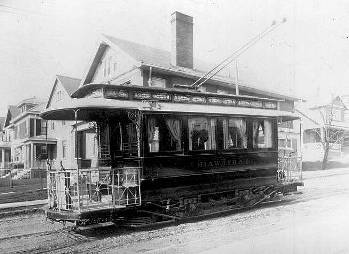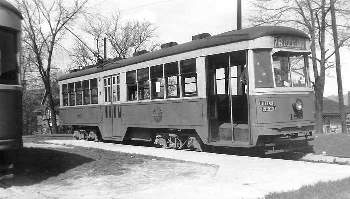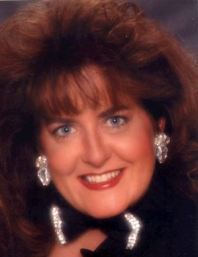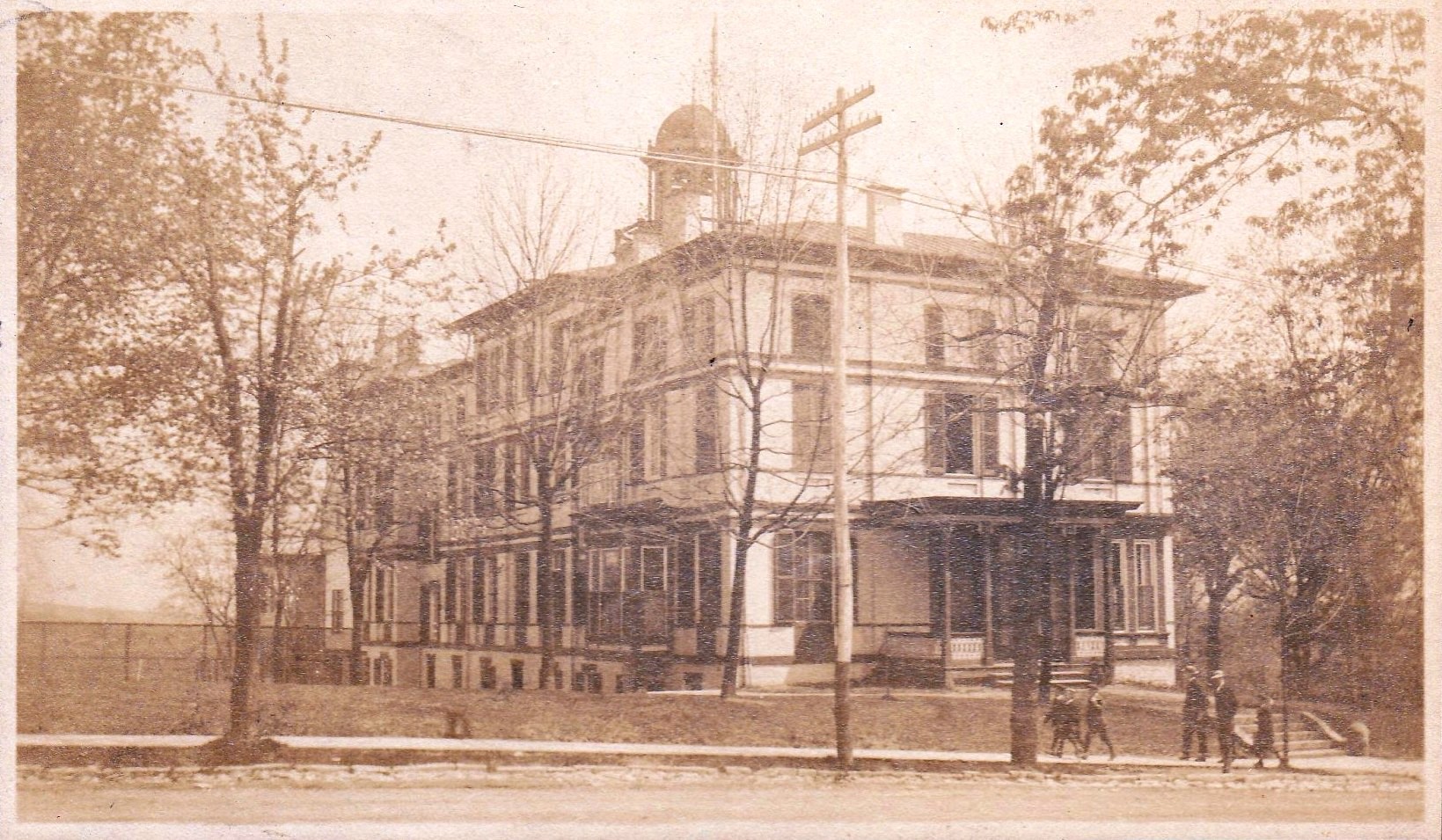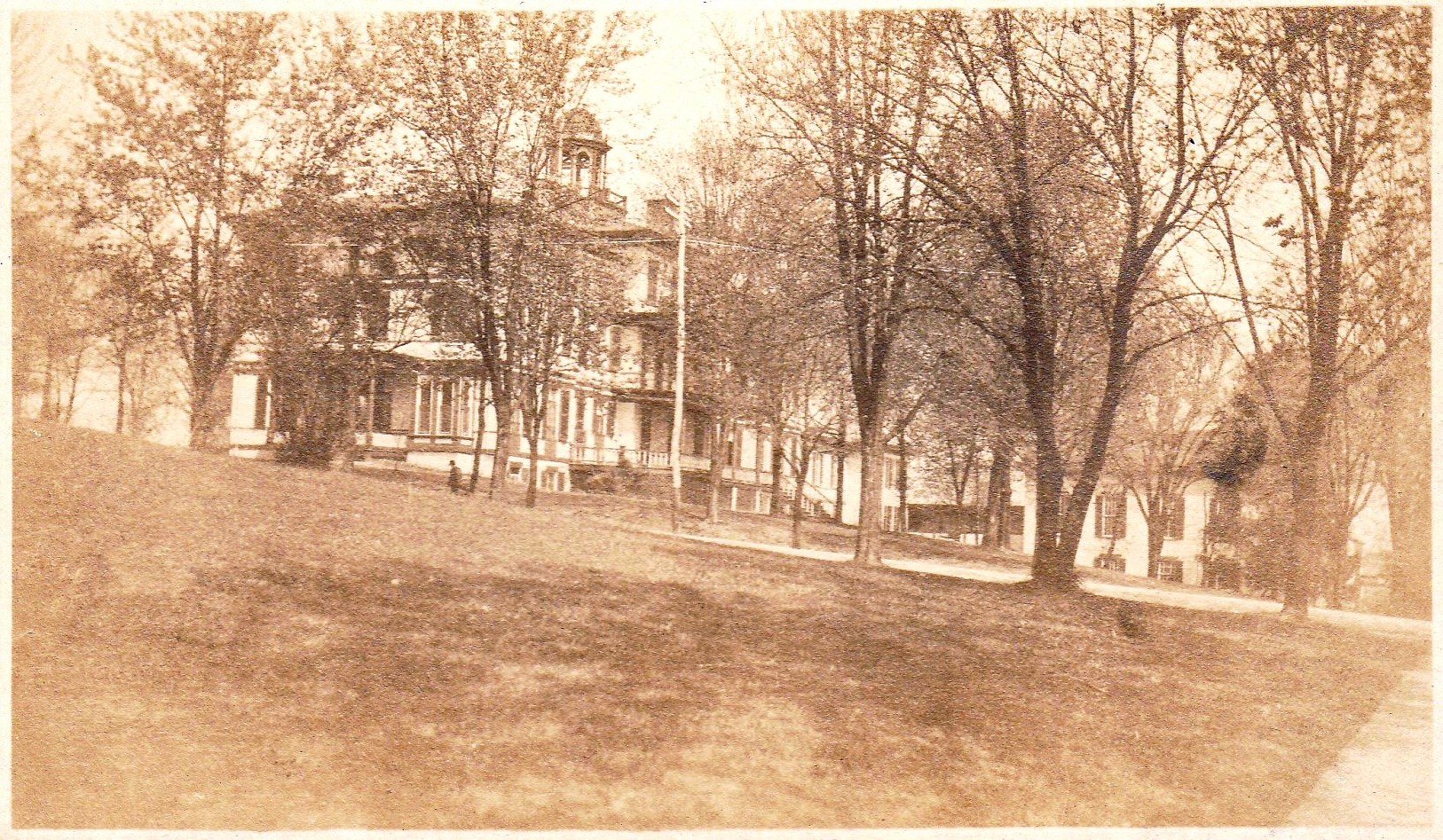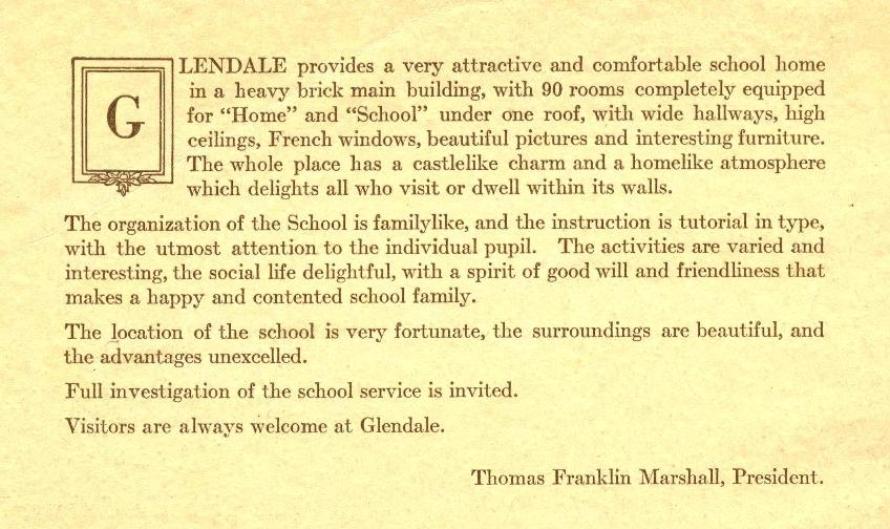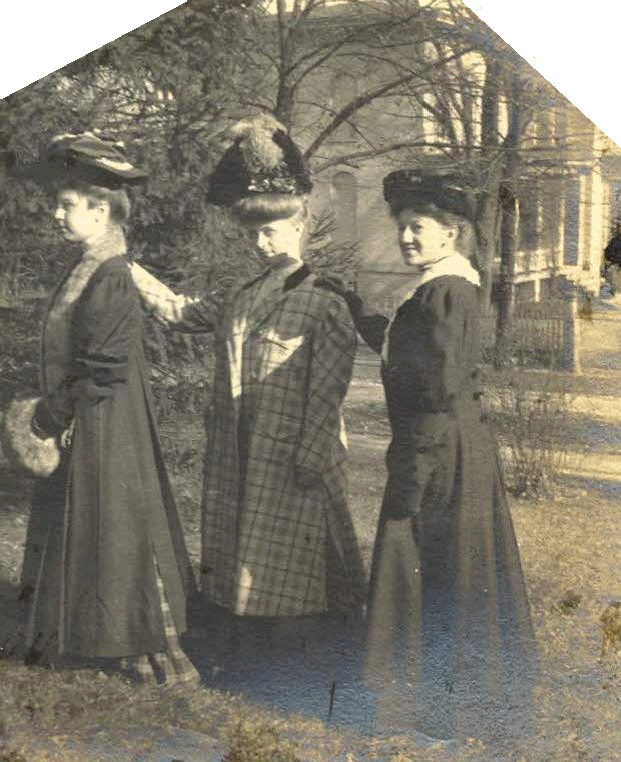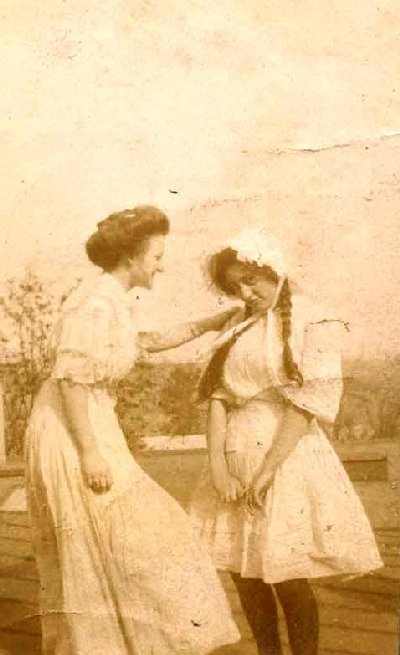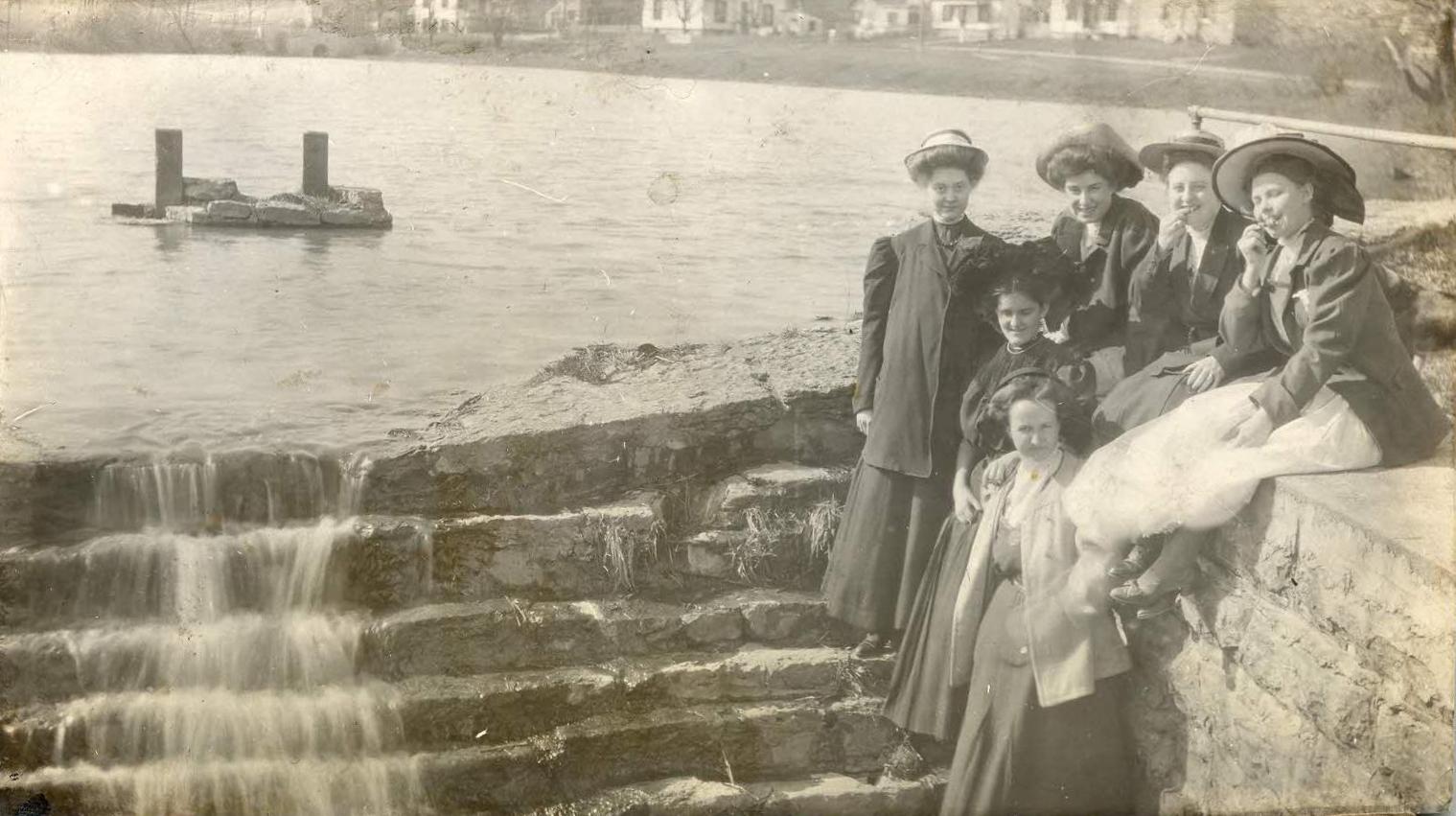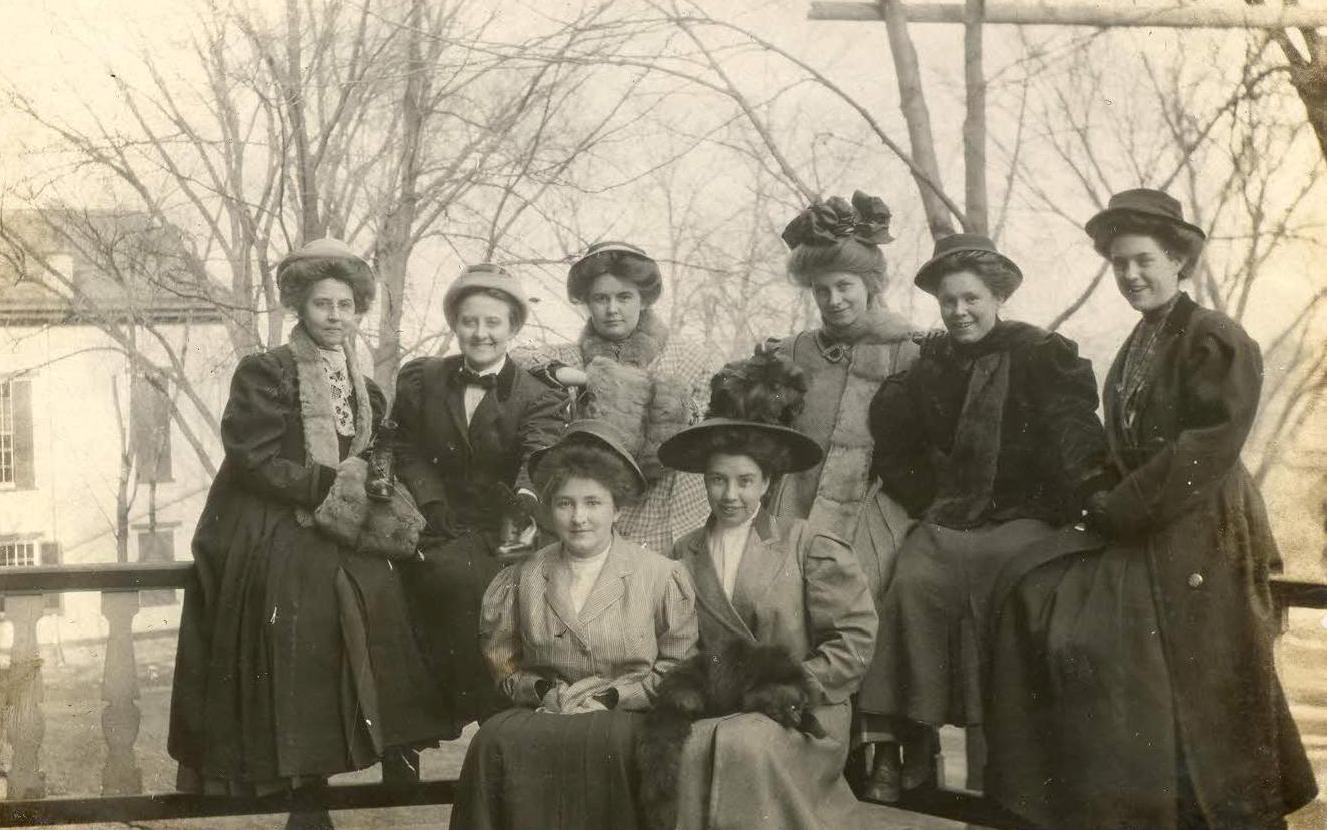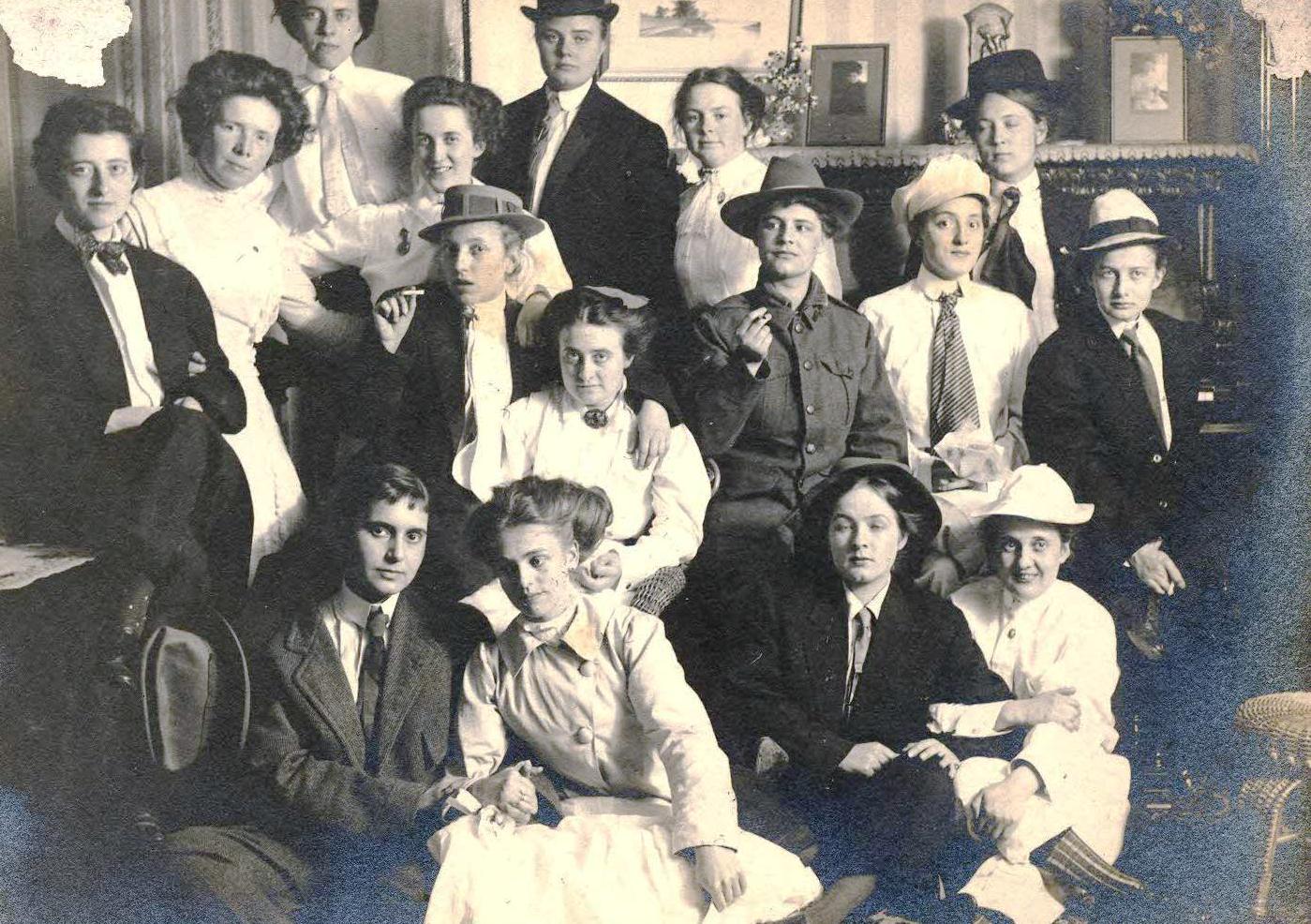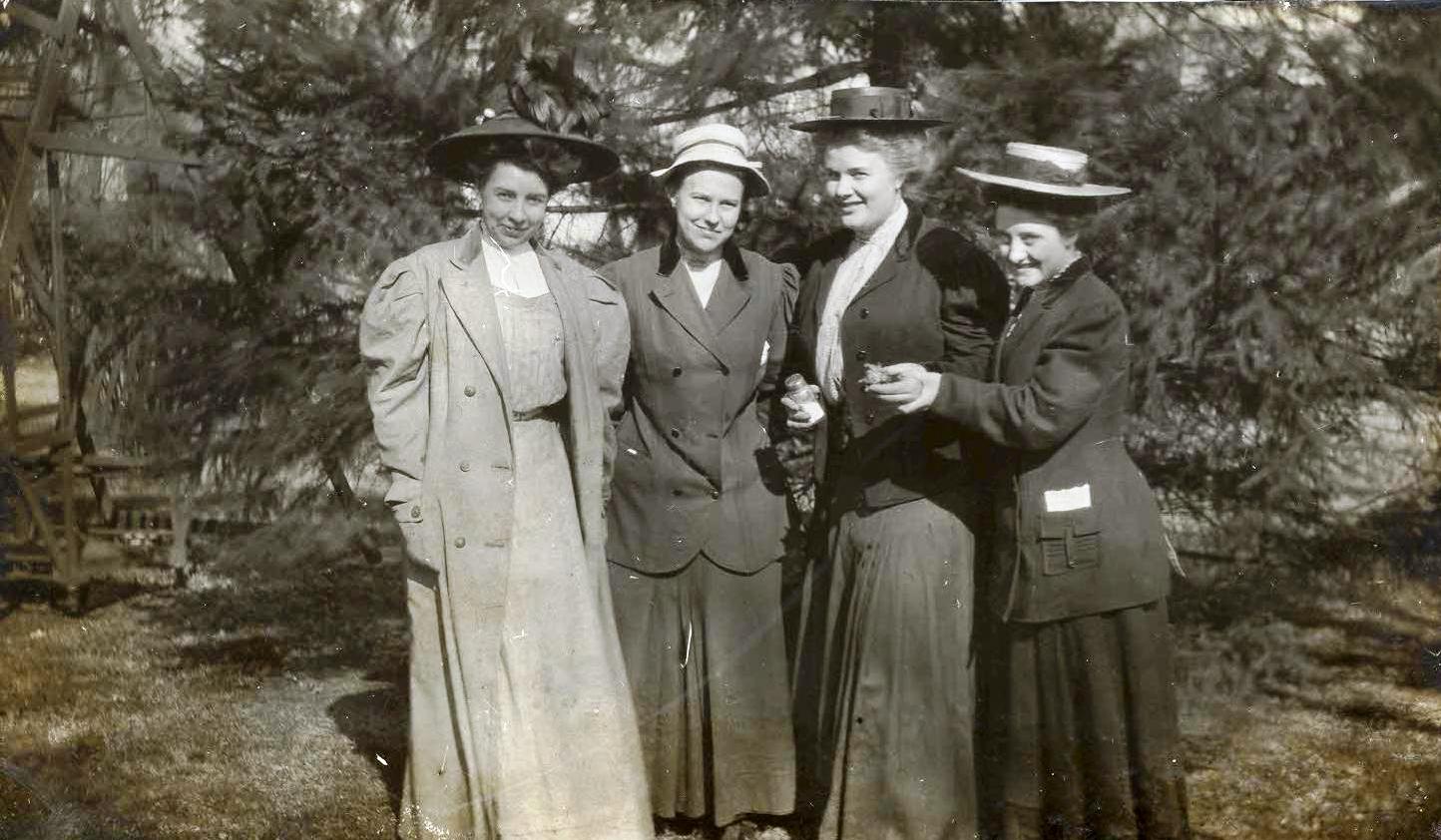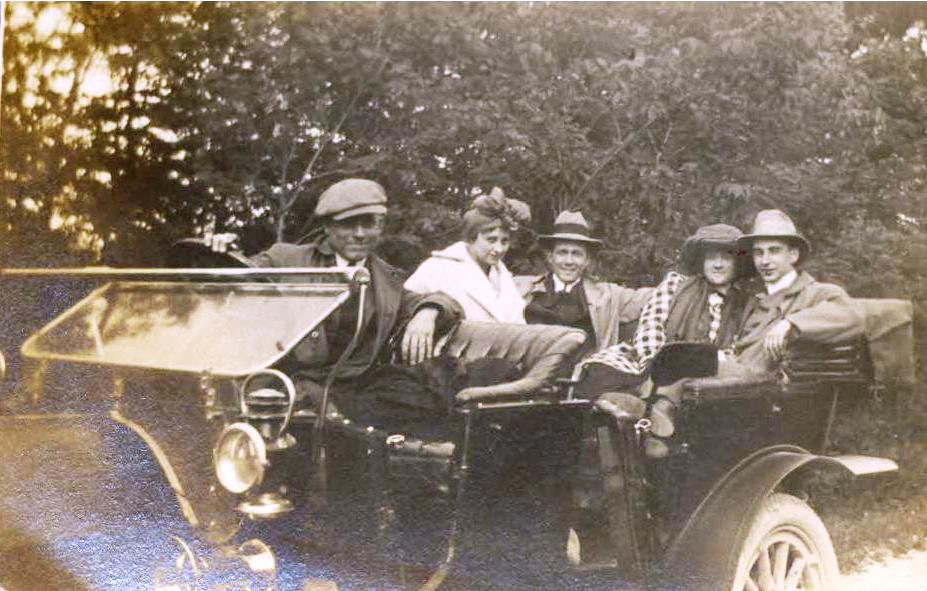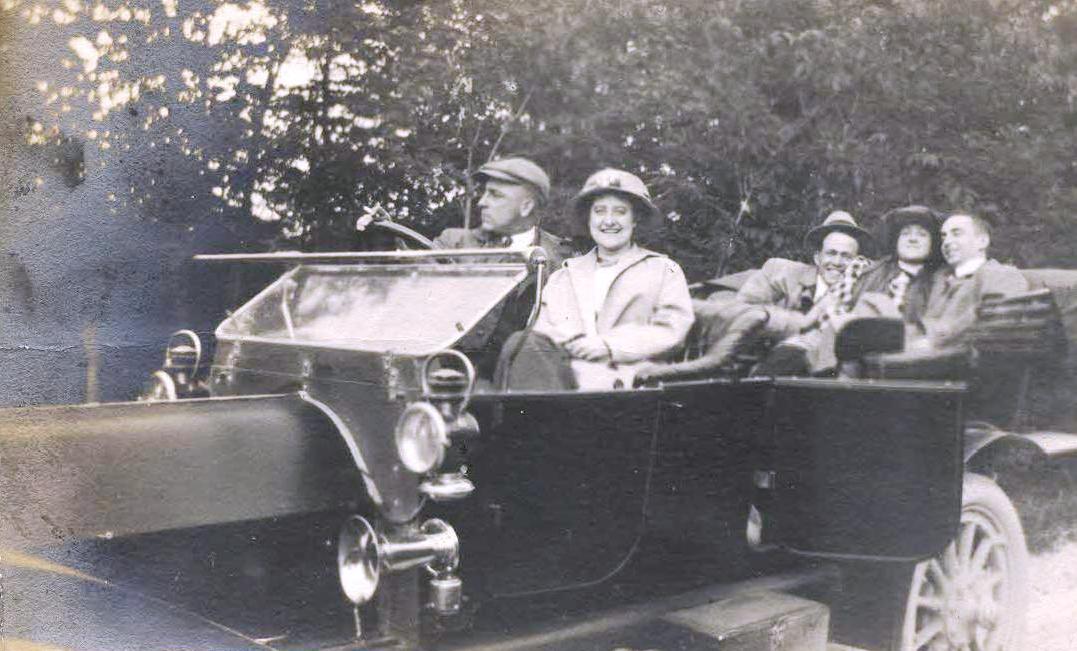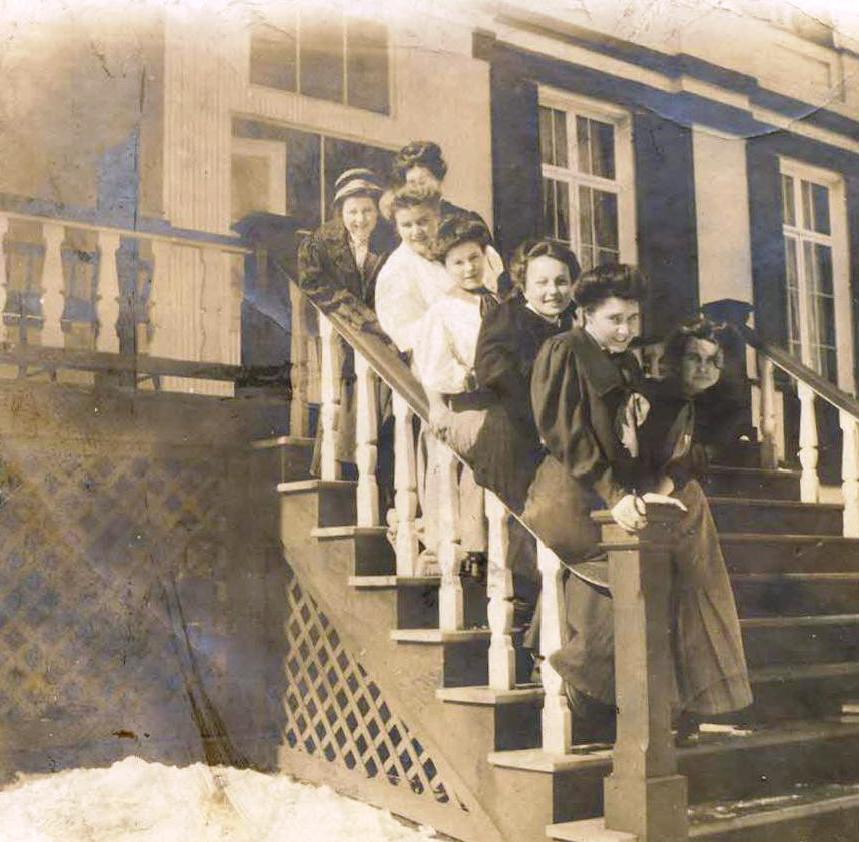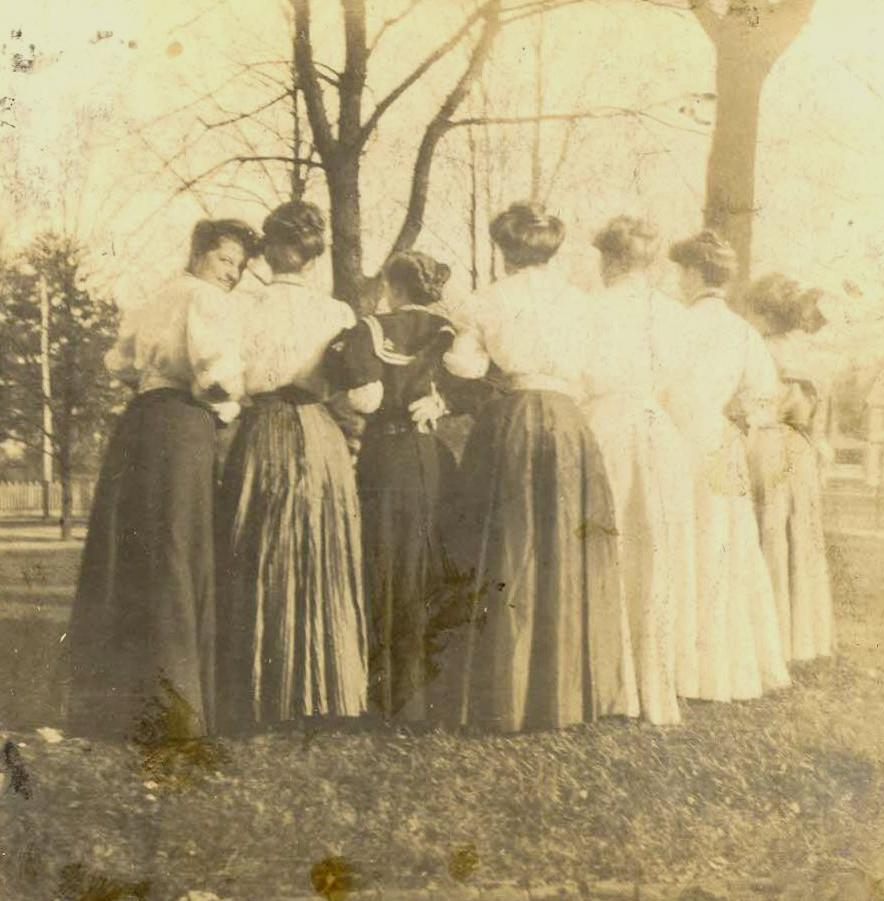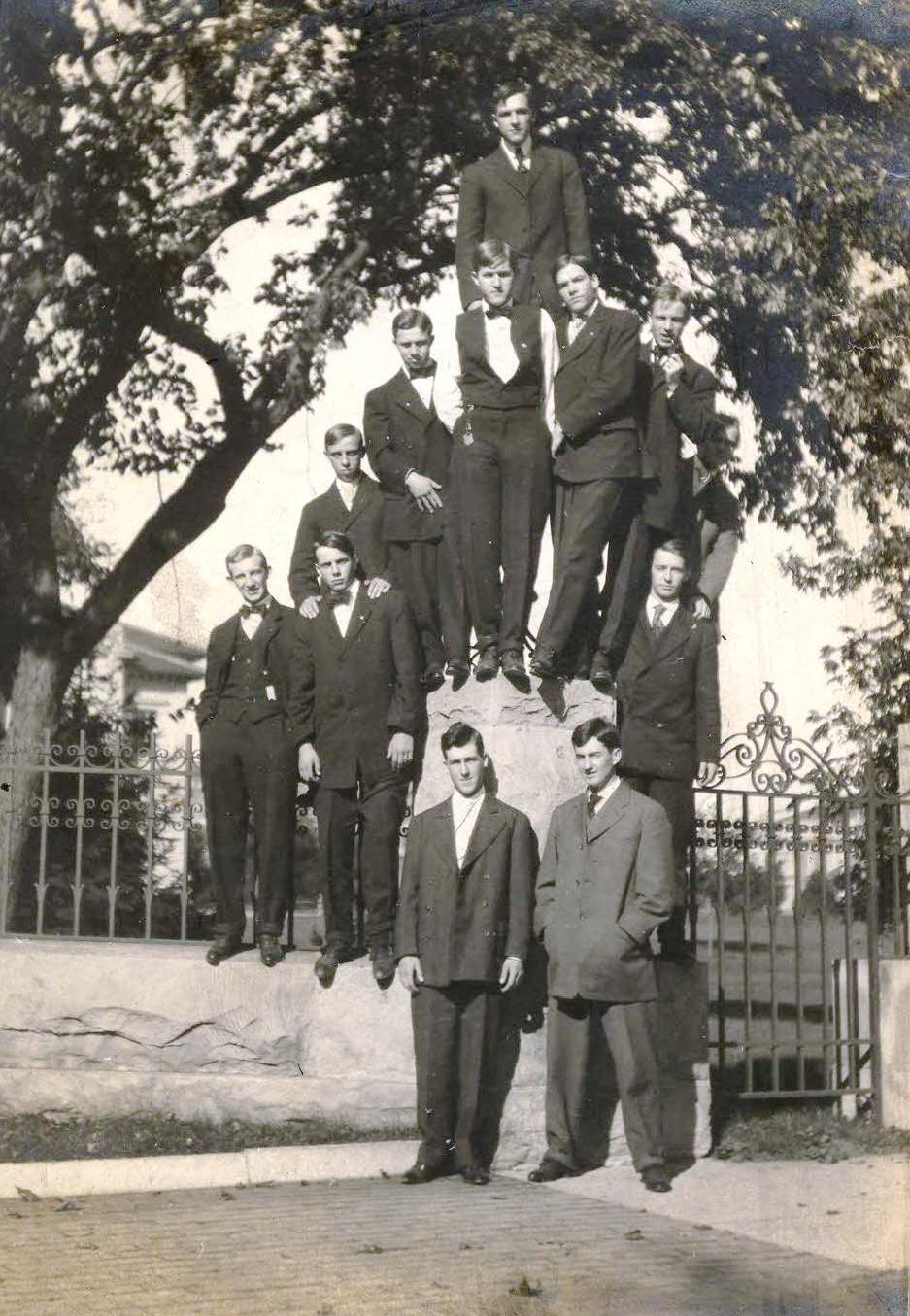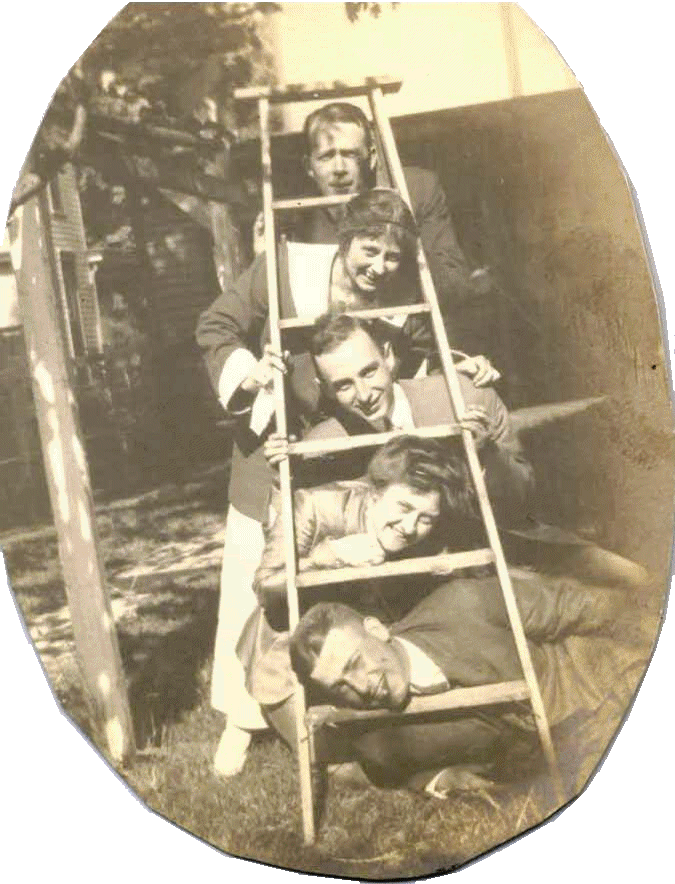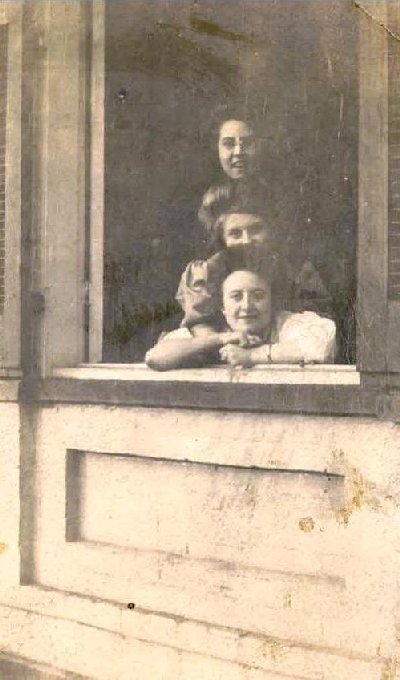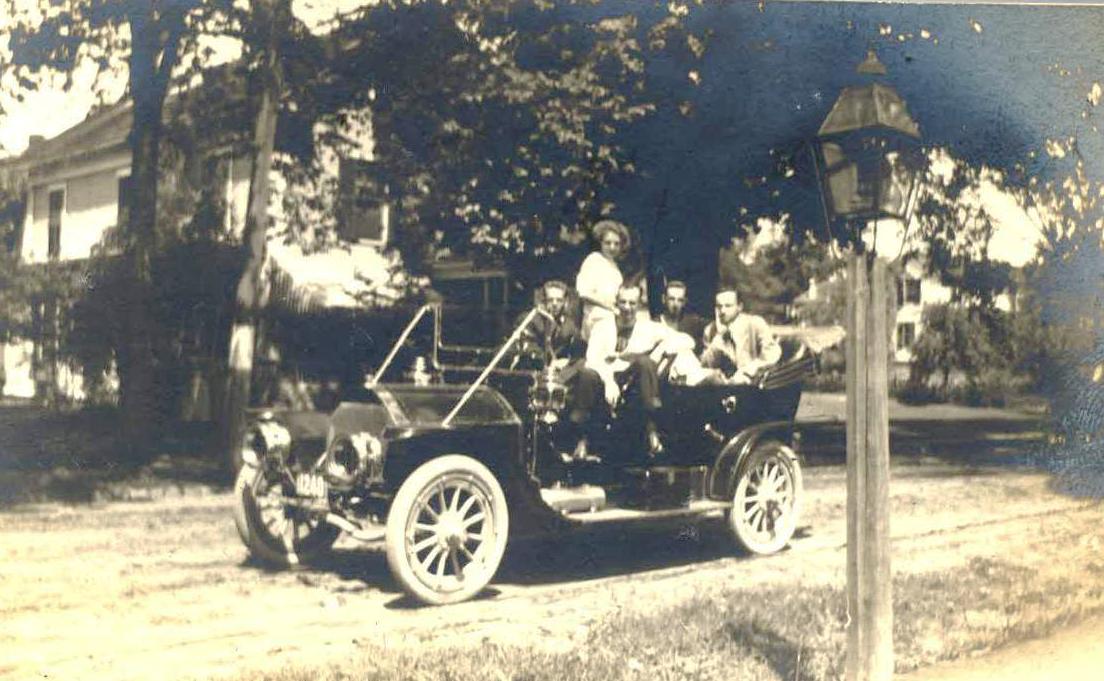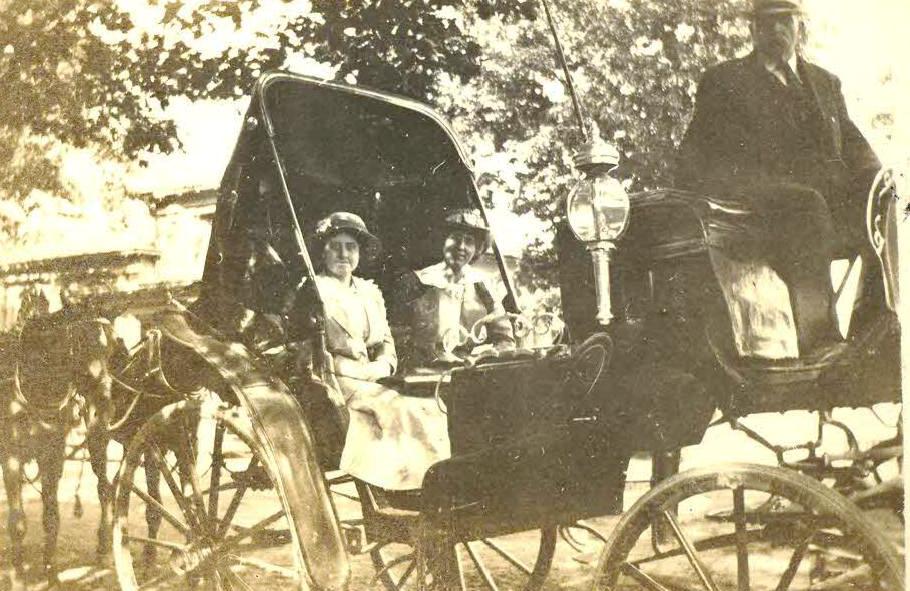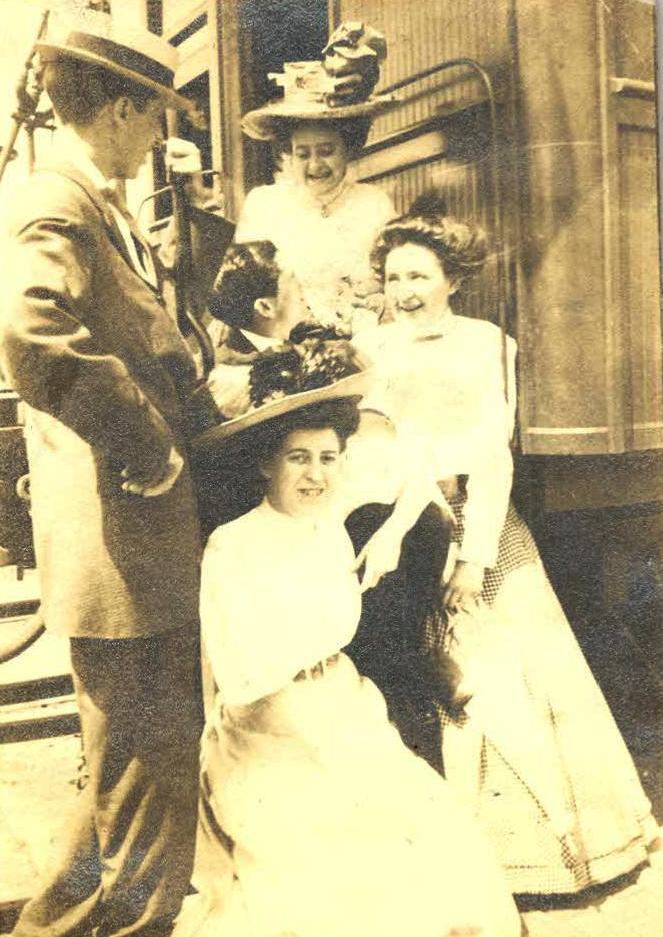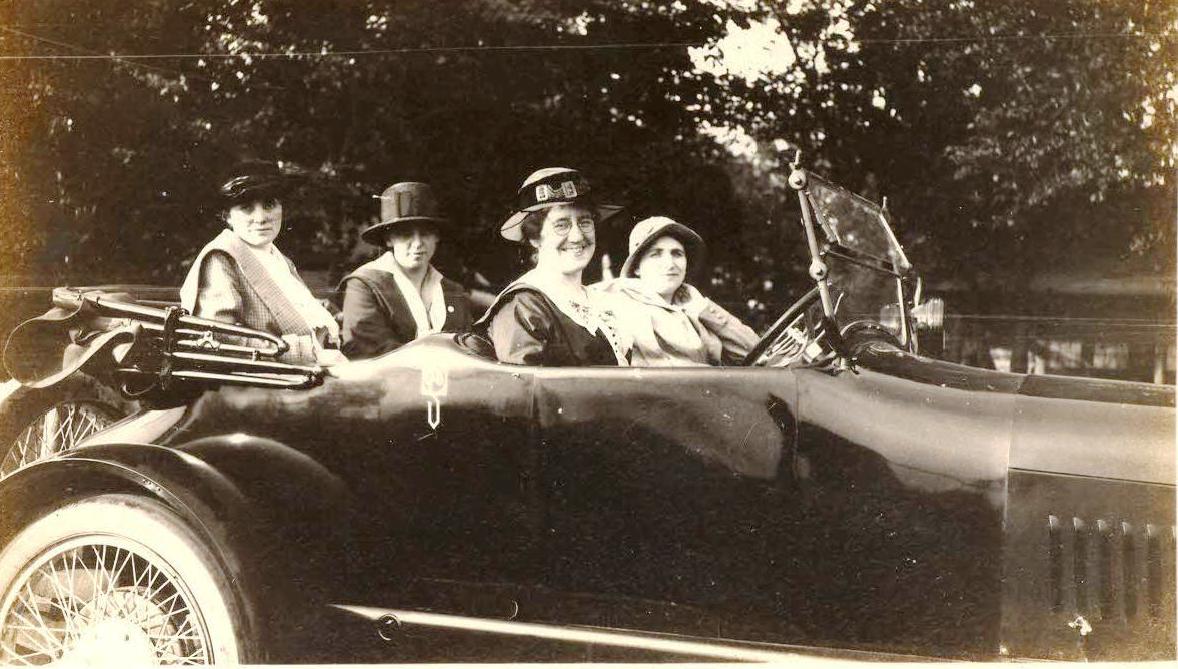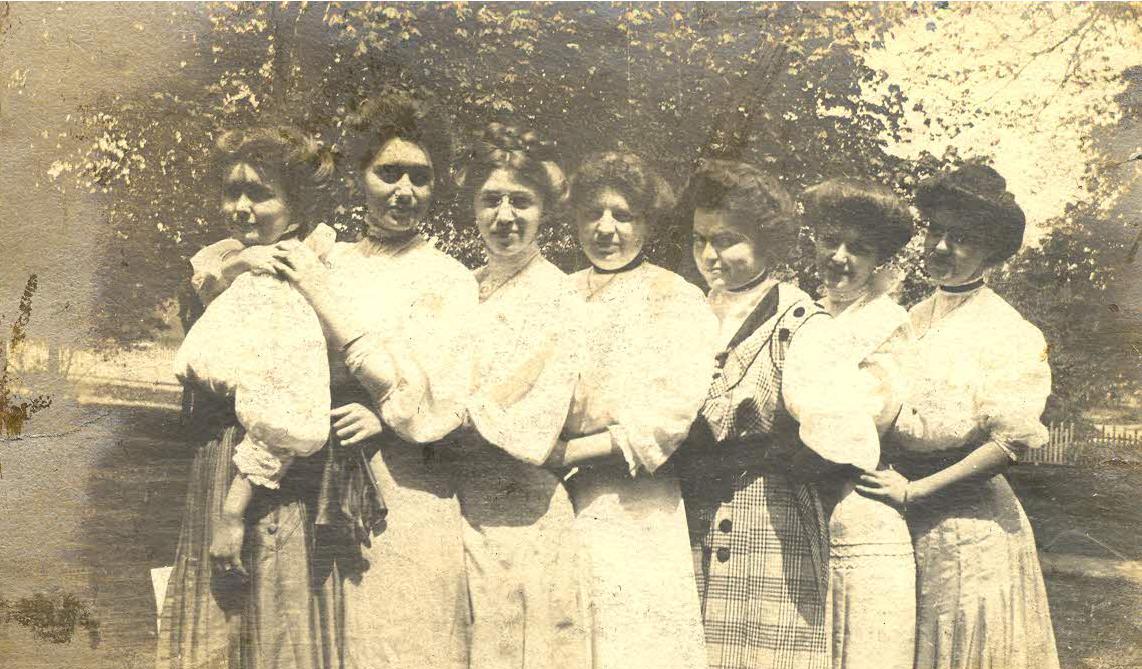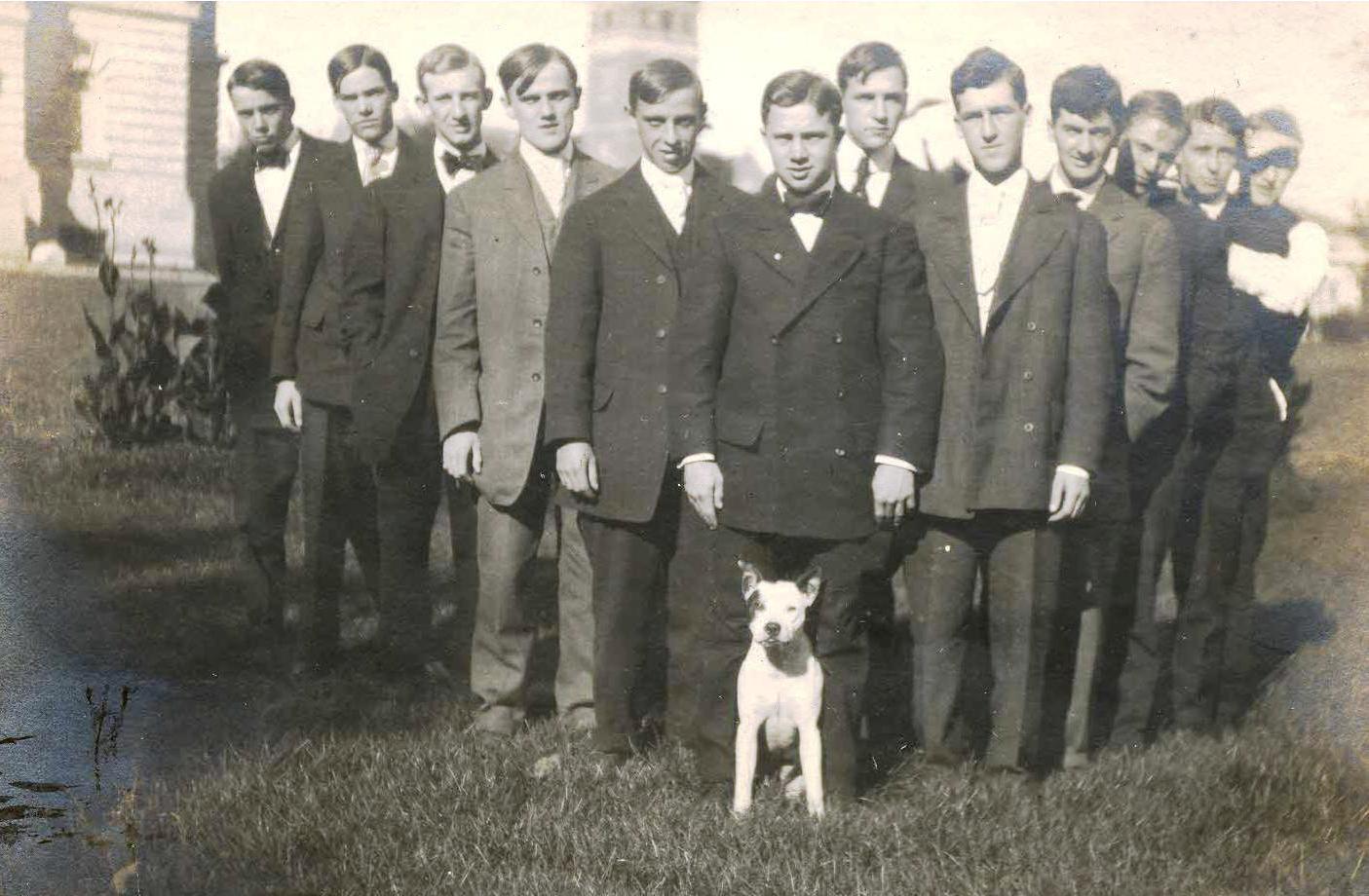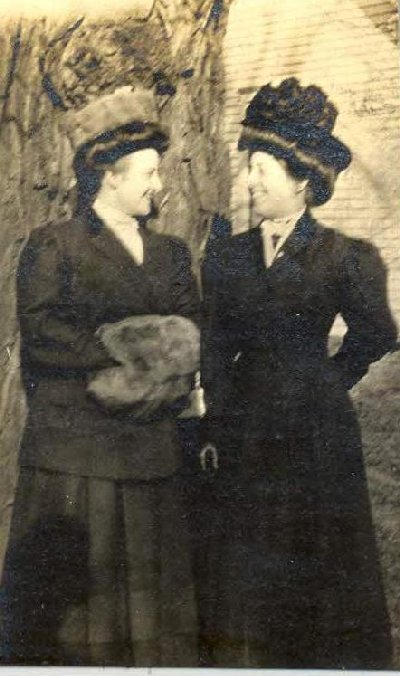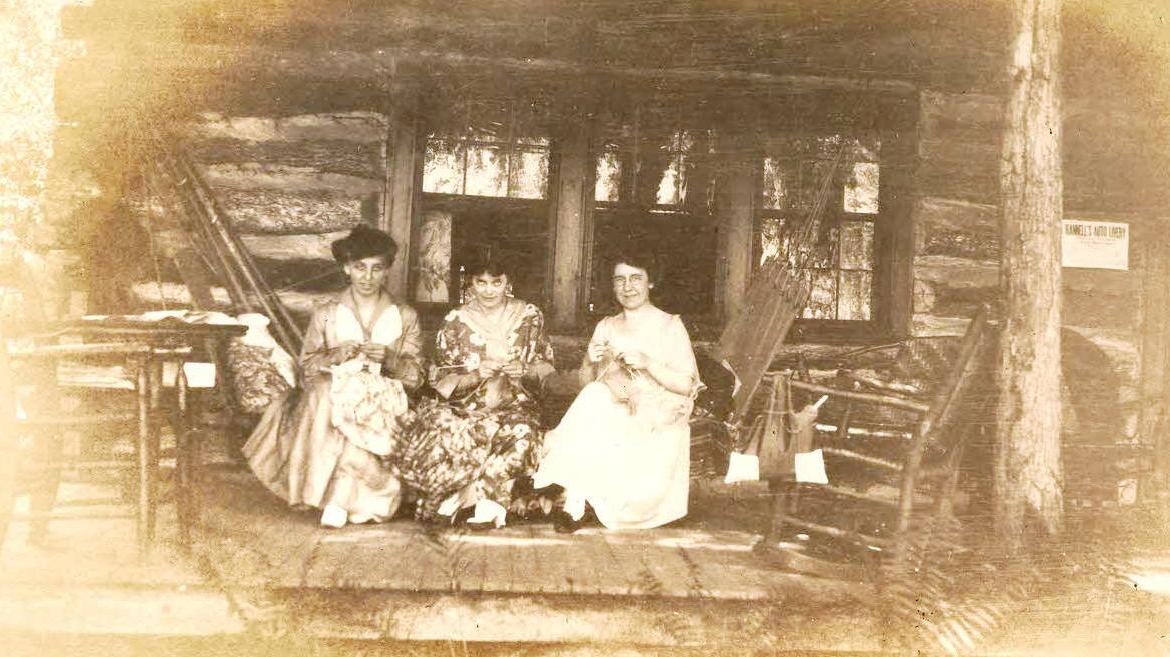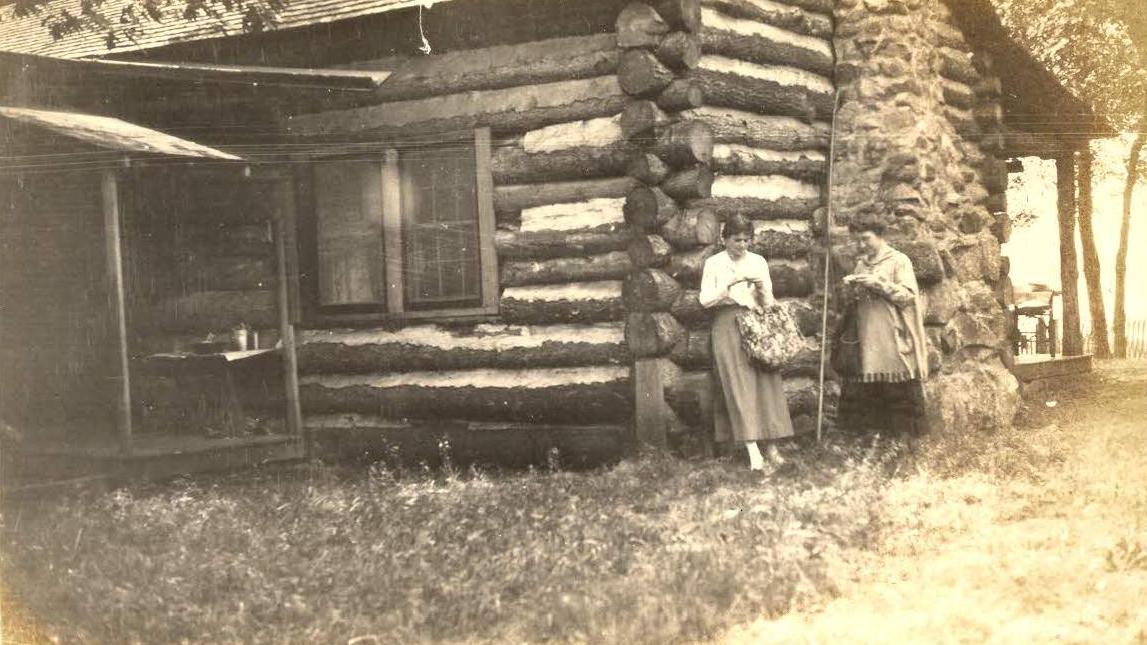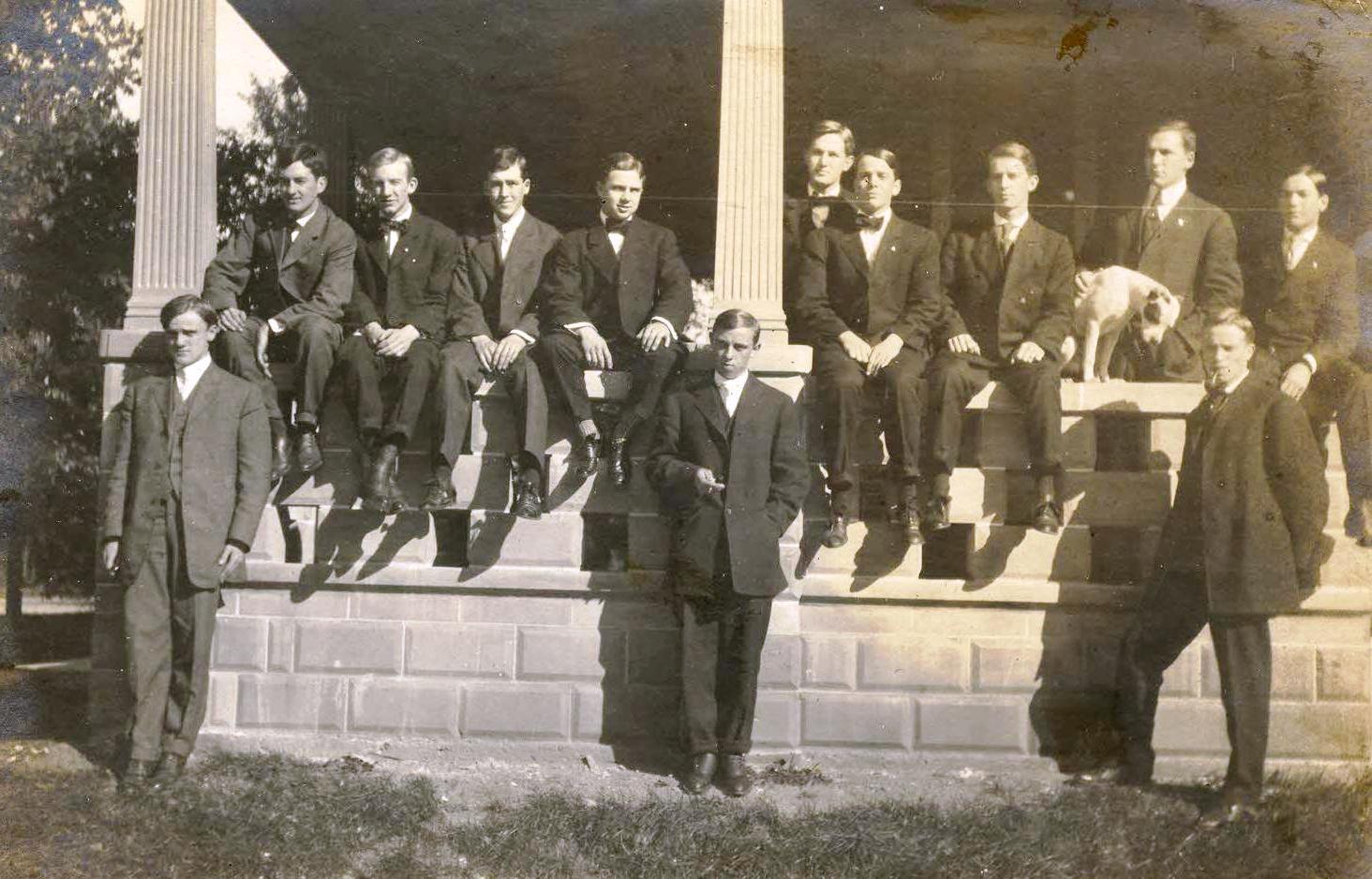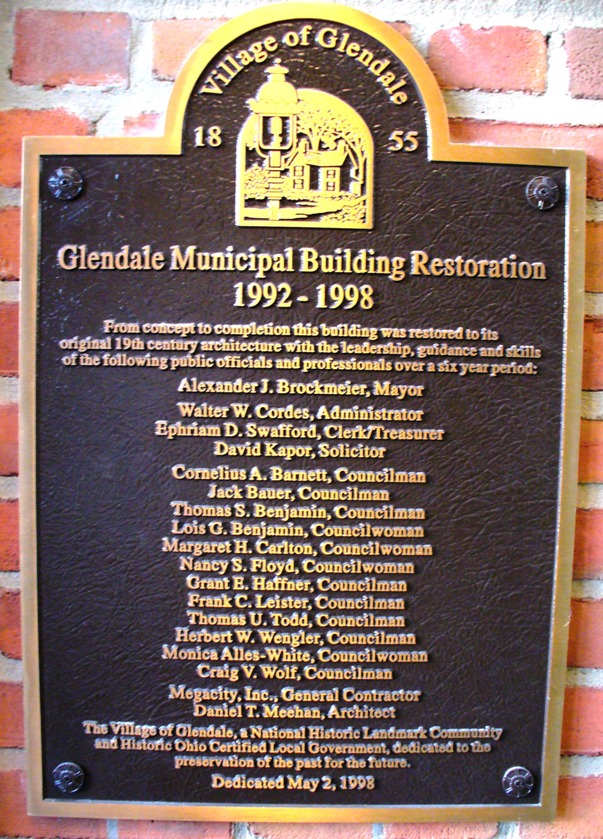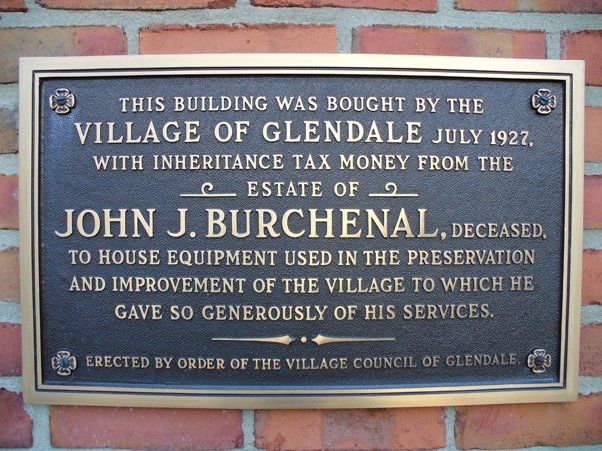Mrs. Hefner some time afterwards built a brick tavern, where Mrs. Samuel Allen's place now is.
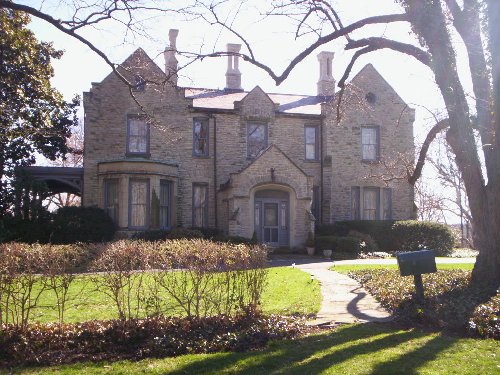
S.B. Allen House
"The founders of Glendale were several gentlemen wishing to build themselves summer residences. They determined to select a place somewhere between Hamilton and Cincinnati, on the Cincinnati, Hamilton & Dayton railroad, which was just being built, and they finally decided on the property where Glendale stands. The following gentlemen were interested in the movement, and became, under the name of the Glendale Association, the proprietors of the village: George Carlisle. S. S. L'Hommedieu, Fenton Lawson, Anthony Harkness, Samuel Fosdick, Henry Clark, Robert Crawford, William Burnett,, Edmund R. Glenn, and Lewis Worthington, as well as a few others. In 1851 this association was organized, and was incorporated as a village under the laws of Ohio March 13, 1855, The association bought of E. R. Glenn, John Riddle, J. Watson and others, about six hundred acres of land, which was subdivided into lots and laid out into streets and parks by R. C. Phillips, a civil engineer of Cincinnati. The subdivision is known as Crawford's and Clark's Subdivision of Glendale, so called because the trustees of the association were Crawford and Clark. There were only four residences on the property when it was laid out, one of which was that of E. R. Glenn, and one that of James Glenn, which stood where the residence of Mrs. B. D. Bartlett is, and which, owing to its being so fine, many years ago was called Castle Warwick. The first lot, the one where A. G. Clark lives, was sold to Henry Clark at a premium of $500, which seems very dear, when we think that. John Cleves Symmes bought the land, including Glendale, September. 1794, for sixty-six and two-third cents per acre. The lot where the schoolhouse stands is lot No. 57 of the above subdivision."
The design of the promoters (o)f the village has been abundantly realized. It is certainly one f the most beautiful suburbs of Cincinnati. The plat was made to conform to the configuration of the lands, with no attempt at geometrical regularity. Sharon avenue, it is true. passes through the plat in a direct east and west course, intersected at right angles by Congress avenue, while there are subdivisions adjacent to the original plat which conform to the conventional type, but the avenues of the Crawford & Clark subdivision present almost every variety of curve known to the mathematician. To the uninitiated this is somewhat confusing, but to the residents it presents no difficulties, and is inure than compensated by the added beauty and the park-like aspect which it renders possible. An artificial lake with an area of several acres and several small parks are also among the attractions of the place.
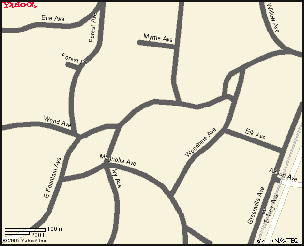
The Meandering Streets of Glendale
The Glendale Lyceum is an outgrowth of the Circulating Book Club (organized in 1880), and of the Library Association of Glendale, which secured quarters, at first over Mr. Bruce's store and subsequently in the Town hall. The Lyceum was incorporated October 8, 1883, The constitution was adopted October 18, 1883, and amended November 7, 1885; membership is limited to residents of Glendale and its vicinity within a radius of three miles, The Lyceum building is a handsome brick structure, of which the corner stone was laid July 4, 1891. It was erected under the supervision of a building committee composed of Samuel Bailey, Jr., chairman; Joseph H. Feemster, secretary; Robert Clarke, treasurer; William A. Procter, and Charles W. Withenbury. The architect was H. Neill Wilson, of Pittsfield, Mass., and the contractor was Isaac Graveson. The main hall is 40 x 50, with a large stage and appropriate dressing rooms. The library, according to the report for January, 1893, consisted of 2800 volumes, while the museum presents a rich and interesting collection of mineralogical, archaeological, and other specimens and curios. The Lyceum was formally opened February 22, 1892, when Judge Joseph Cox delivered the dedicatory address. Judge Samuel F. Hunt was the orator at the laying of the corner stone.
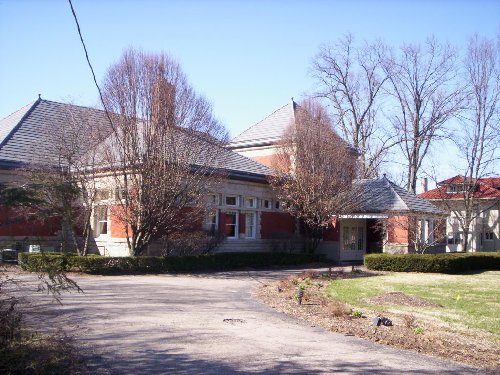
The Lyceum, an excellent venue for entertaining, events, wedding receptions, etc.
Glendale was incorporated as a village May 22, 1855. The first election occurred on the 13th of August following, when George Crawford was chosen mayor, Samuel J. Thompson, recorder, and Samuel Fosdick, Ezra Elliott, C. Deitrick, B. Roberts, and Stanley Matthews, trustees. The number of voters was fifty-six. Benjamin Sterrett was the first village treasurer. The succession of mayors has been as follows: George Crawford, 1855-56; Anthony Harkness, 1857; Warner M. Bateman, 1858; William B. Moores, 1859: Cyrus Knowlton, 1861 ; I. D. W. Jennings, 1862; Clinton Kirby, 1862; Warner M. Bateman, 1862; Samuel J. Thompson, 1864; Stanley Matthews, 1866: Samuel T. Crawford, 1868; R. M. Shoemaker, 1869; Samuel T. Crawford, 1869; T. J. Haldeman, 1874; R. W. Keys, 1874; Samuel A. McCune, 1876; Florien Giauque, 1882; Thomas Spooner, 1884; Henry B. McClure, 1888. The village building was erected in 1871, and the town hall in 1875.
The Glendale water supply is derived from artesian wells. The work of laying mains was begun September 26, 1892, but water was not supplied to private consumers until June, 1893. Analysis of the water shows almost entire freedom from deleterious elements.
The first postmaster was John C. Wolfe, appointed October 7, 1852. The postal designation at that time was Fosdick, which was changed to Glendale November 28, 1854.
Churches
The First Presbyterian Church of Glendale was organized November 29, 1855, in the chapel of Glendale Female College, with seventeen members. Services were held in the college chapel until 1860, when the present chapel of this church was built. The church edifice was dedicated in April. 1874. Revs. Thomas Spencer, J. G. Monfort, D. D.. L. D. Potter, D. D,, S. S. Potter, and Frank Robbins served as stated supplies until 1861, since which date the pastors have been Revs. Hiram A Tracy, William H. Babbitt, S. H, McMullin and David A. Heron. The following is a list of elders: Jacob J. Packer, John F. Keys, William B. Moores, Stanley Matthews, William B. Probasco, Samuel J. Thompson, Samuel Robbins, Robert K. Brown, Thomas J. Duncan, Hugh W. Hughes, Thomas J. Biggs, Harry W. Hughes, Harry L. Keys, and W. H. Hutton.
St. Gabriel's Catholic Church, Glendale, was organized by Rev. J. C. Albrink, by whom a small brick church that constitutes the rear part of the present edifice was erected in 1859. Mass had previously been celebrated in a small frame house at the junction of the Springfield and Princeton pikes by priests from Cincinnati. Ten acres of ground, fronting on Sharon and Washington avenues and Church street, were donated to the priests by Gross & Dietrich. The pastoral residence was completed in 1863 by Rev. James M. Carey. Rev. James O'Donnell enlarged the church edifice to its present proportions; he also built the school and Sister's house. The succession of resident pastors has been as follows: Revs. Gerald C. Grace, P. A. Quinn, James Henry, James M. Carey, P. A. Quinn, and Nicholas J. Kelly, who assumed charge in 1880.
The Church of the New Jerusalem (Swedenborgian), Glendale, was instituted December 25, 1860, and organized January 16, 1861, with C. H. Allen, William B. Pierce. Jacob Purington, and Dr. George F. Foote, councilmen. C. H. Allen donated the church site and money sufficient for the building, " so far as to inclose the same and secure it from damage by paint." The corner stone was laid April 28, 1861, and the dedication occurred October 6, 1861, when Rev. J. P- Stuart officiated and Rev. Chauncey Giles preached. The pastors have been Revs. J. P. Stuart, 1861-62; Frank Sowall, 1863-72; J. H. Einhaus, 1872; J. E. Warren, 1872-73; Edwin Gould, 1873-76; H. H. Grant, 1890-91. In recent years the church has been principally supplied with preaching by the students and professors of Urbana University.
Christ Protestant Episcopal Church, Glendale. Rev. John B. Pradt held the first Episcopal services at Glendale, July 9, 1865. The parish was organized oil the 6th of August following, when John D. Jones was elected senior warden, N. C. McLean, junior warden, and R. H. Shoemaker, Henry Holroyd, George W. Jones, John Titus and Robert B. Moores, vestrymen. Public services were held in the chapel of Glendale College for several months, and then at private houses until 1867, when a small frame chapel was erected on Mr. Fosdick's lot for temporary occuancy. The present stone church was built in 1870 at a cost of $18,000. and consecrated in .July, 1872. by Bishop Bedell. The rectory was built in 1875. and the parish house was added to the church in 1891. The succession of rectors has been as follows: Revs. John B. Pradt, August 6, 1865, to September 30, 1867; Samuel H. Boyer, November 20, 1867, to November 1, 1869; Charles H. Young, April, 1870, to October, 1874; David Pise, D. D., since April, 1875. Rev. Cleveland K. Benedict became assistant rector in June, 1892.
The Glendale Methodist Episcopal Church originated in a series of meetings held in the Town Hall by Rev. It. K. Deem. The first board of trustees consisted of J. H. Moore, N. W. Hickox, William E. Mears, and A. F. Bernhart. The church site, consisting of two lots, valued at $1,000, was donated by Clinton Kirby. who also contributed $500 in cash. The work of building was begun in November, 1886, under the supervision of N. W. Hickox, and the completed edifice was dedicated May 29, 1887. Rev. R, K. Deem, the pastor at that time, has been succeeded by Revs Andrew Hamilton, Charles L. Chapman and Calvin Horn.
Click Here for Glendale Biographies from this 1894 History (pdf)

Glendale 1860
While most towns near Cincinnati had begun as autonomous villages and became suburbs only as the city expanded, Glengale was planned as a community in a rural setting whose residents would work in Cincinnati. In 1851, 30 people formed the Glendale Association and purchased 600 acres, once the farms of John Riddle and Edmund R. Glenn (from whom the village name was obtained), along the line of the Cincinnati, Hamilton and Dayton Railroad. Robert C. Phillips planned the town, lots were sold and by 1852 the first house was built.
BRACKERS TAVERN
When the Cincinnati, Hamilton, and Dayton (C.H. &D.) Railroad was under
Construction in the 1840’s a labor camp was set up along the right-of-way. In 1851 a group of people purchased the 600-acre plot of farmland, with the Intentions of creating pleasant living away from the city. Construction started on the lots in 1852 resulting in charming 19th Century architectural styles. In May of 1885 this area was incorporated as the Village of Glendale. The Glendale Historic District was placed on the National Register in 1976, as the First historic National Landmark in Ohio.
Glendale’s Village Square, which contains a number of shops and the train Depot, were built in 1880 to replace earlier structures destroyed by fire. Additional shops, police station, and city offices clustered around the depot became the center of Glendale’s activities
This handsome, square, two-story brick building was built possibly as early as 1853, and before 1856. In 1856 it was known as Bracker Tavern. Before the Prohibition law of 1918, it was known as a typical saloon. With the advent of Prohibition it became more of a restaurant serving full meals in the front, with slot machines and liquor in the back room. Overnight guests in the village lockup were served breakfast by the tavern. This became so well known and desirable by the local hobos that it was noted if they were recent guests of the village, they were not locked up. In the early 1920’s a daughter of the Brackers married Mr. Robert Heine and they became the owners. They Installed a soda fountain and sold French Bauer Ice Cream. Up front they sold Penny candy just like the old Ben Franklin Stores. At lunch hot soup and sandwiches were served.
In 1958 this establishment was put into Lillian H. Heine’s name and in 1962 she sold the establishment to William McConnell, along with a group of three other men who changed the name to the Iron Horse Inn, which takes its name from the 1856 steam engine. This establishment still kept with serving food and drink to its patrons. In 1971 ownership changed hands to Mr. Robert Maloney and Vera M. Maloney. In 1984 ownership again changed hands to Mr. Dewy Huff and his wife Betty. They brought the restaurant to a new culinary height. Serving everything made from scratch. Specialties of the house were roasted duckling with orange sauce, chicken breast with Chicken Mousse and Julienne Vegetables, Veal Medallions with Chanterelle Mushrooms and Artichoke Bottoms. Lunch was a lighter affair with sandwiches and hearty salads. At any meal, desserts were outstanding, one of which was Bavarian Mud Pie. It became a memorable eating experience with anyone who dined there.
On June 11, 1994 Dewey & Elizabeth Huff sold the establishment to a long standing Glendale family. The Sawyers remodeled the restaurant and in keeping with tradition, the Iron Horse remained an upscale eating establishment. In 2008 the Iron Horse was once again sold to another Glendale Resident and was redecorated to embrace the old and welcome the new.
In 2012, Ashley and Jay Silbermann, along with Tom Rosenbaum and John Christian, bought the Iron Horse Inn. Their intention is to create a more casual, accessible restaurant, so people come more often than just for special occasions.
Henry Bishoprick was a Glendale resident whose ad (below)
appeared in the 1856 Williams Cincinnati Business Directory:
Birth: May 2, 1812
Yorkshire, England
Death: July 10, 1892
Brooklyn, Kings County, New York, USA
Business Executive, Union Civil War Veteran. Born in Yorkshire at Richmond in England, he emigrated to the America and settled in (Glendale) Cincinnati, Ohio. Bishoprick entered into business and eventually started the Bishoprick and Company, manufacturers of infallible baking powder in Cincinnati. He was a partner of Thomas M. Redhead and was married to his sister, Elizabeth Redhead. When the Civil War began, he supported the Union Army and offered the service of his business. After the threat of a Confederate invasion of Cincinnati in 1862, he volunteered to help to defend the city and enrolled with the 11th Ohio Volunteer Militia. He enlisted for thirty days' service and was mustered into Company H as a Private. After the war, he moved to Brooklyn, New York where his wife died in 1866. Bishoprick passed away in 1892 at his residence in Brooklyn when he was 80 years old.
Biography above by Kevin Guy
Life could be hard in the mid-1800's, even for prominent men like Henry Bishoprick. Henry's son, Charles Edward was born in August of 1850 in Buffalo, New York, and passed away from "gangrene of the cheek" in Glendale on February 22, 1853, at just two and a half years old.
Despite the loss of their son Charles, according to the US Census, Henry and Elizabeth had quite the full house in 1860, although it appears as though he had moved from Glendale to Cincinnati by then; perhaps to be closer to work. Their children's names and ages were Amelia 20, Alice 15, and Ellen 13, all Canadian born, and Nicholas 8, and Mary 5, both born in Glendale. The Bishopricks also had a 22 year old English servant named Elizabeth Nichol in residence.
Sadly, their daughter Mary, born in Glendale in May of 1855, passed away from "scarlet fever" on December 10, 1864 at just nine years of age. In 1866, after the war, Henry moved to Brooklyn, New York, where his wife died on January 27, 1866 of "nervous fever" (typhoid). Several of Henry's family, including who appears to be his father, Mark, are buried in Spring Grove Cemetery.
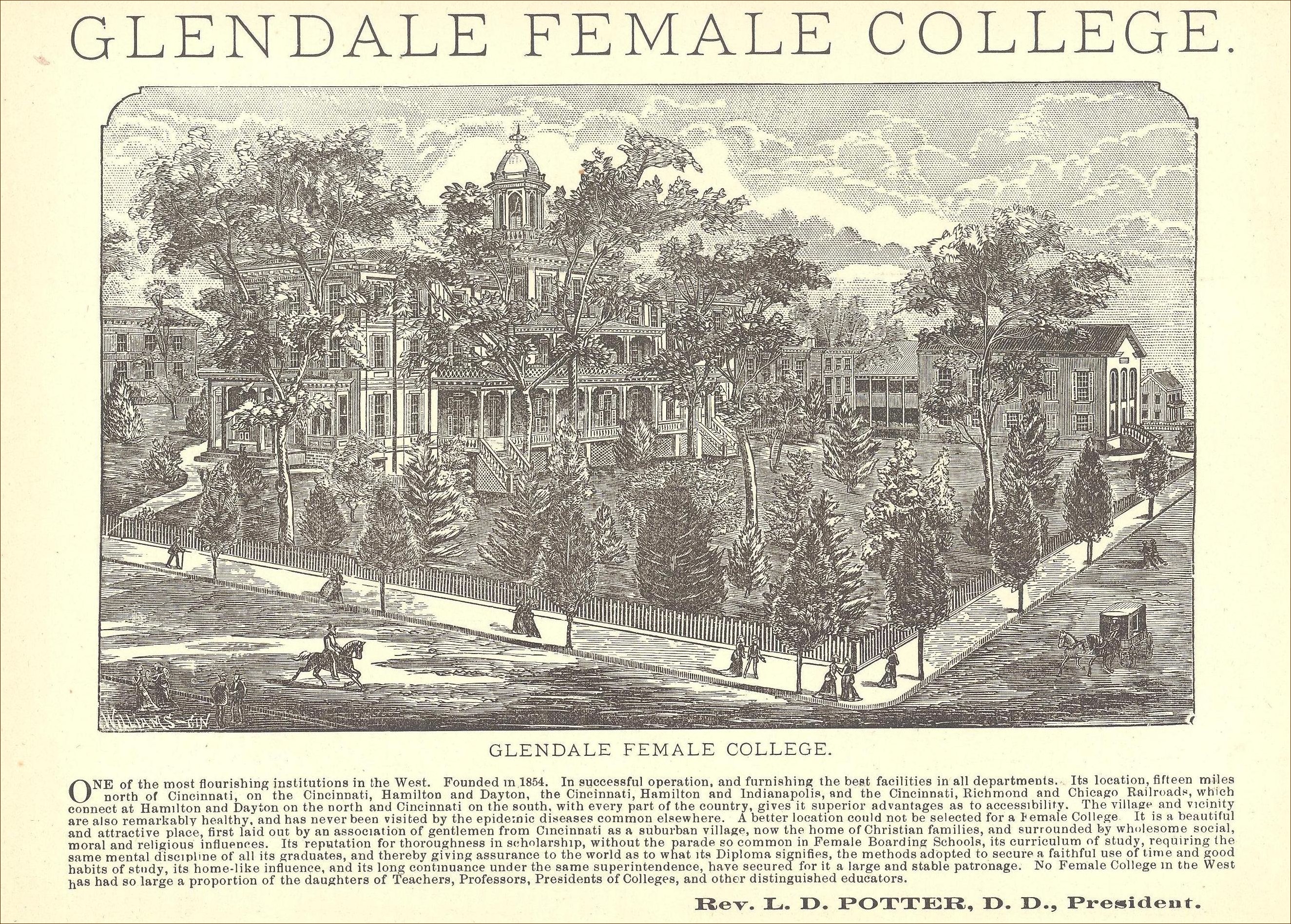
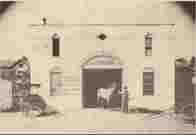
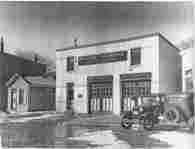
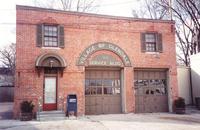
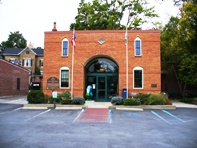
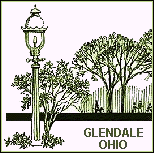

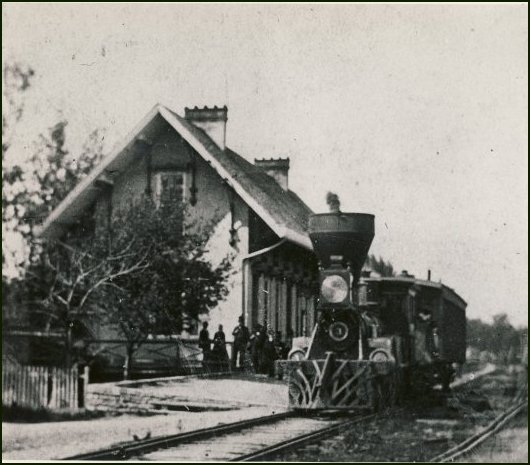





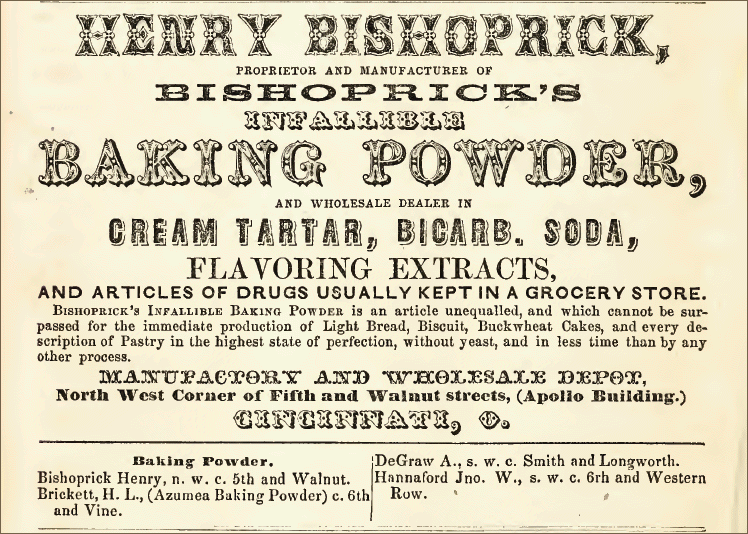


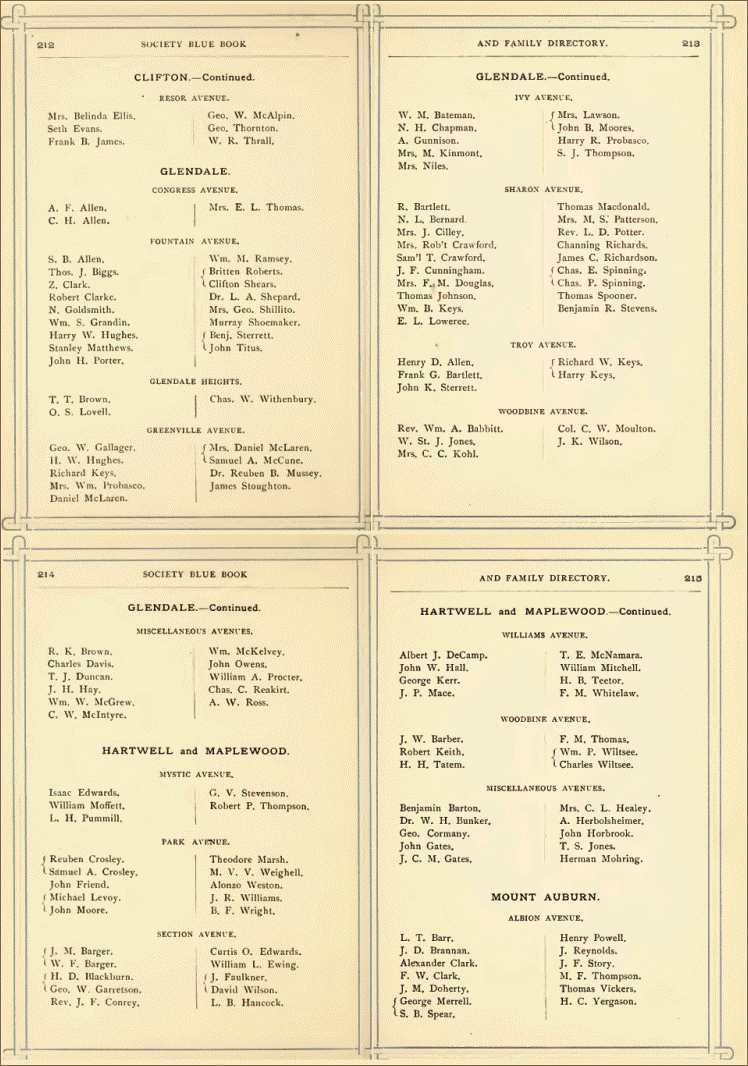


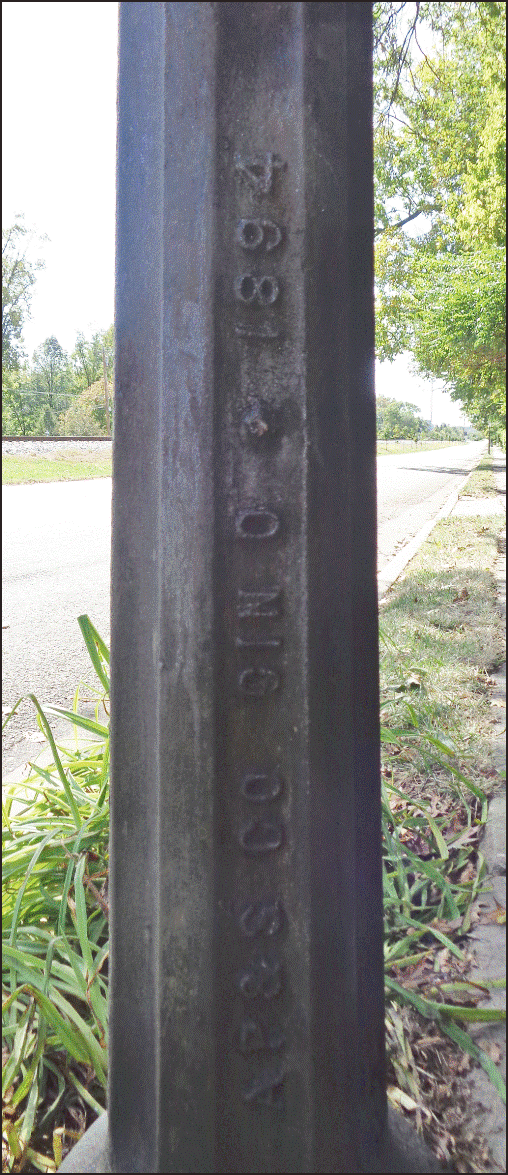
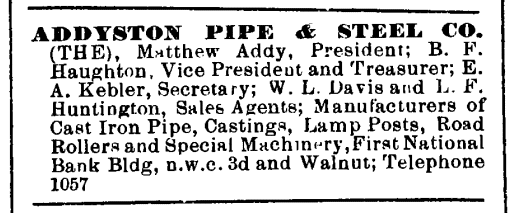
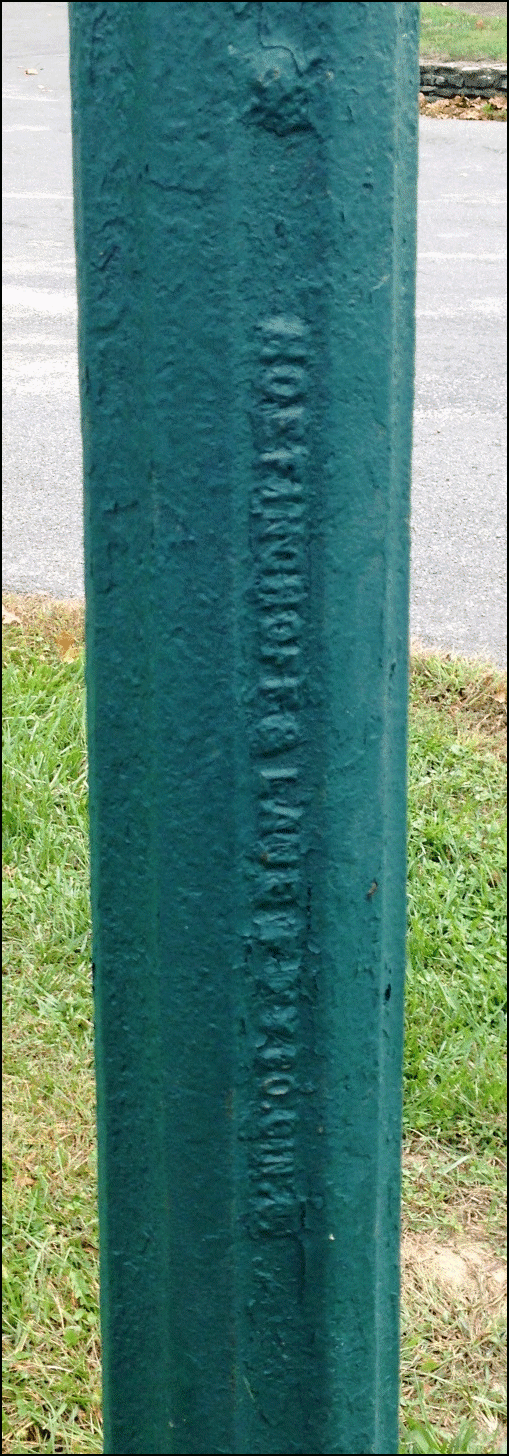

 Mayor Matthews & Mayor Carruthers
Mayor Matthews & Mayor Carruthers